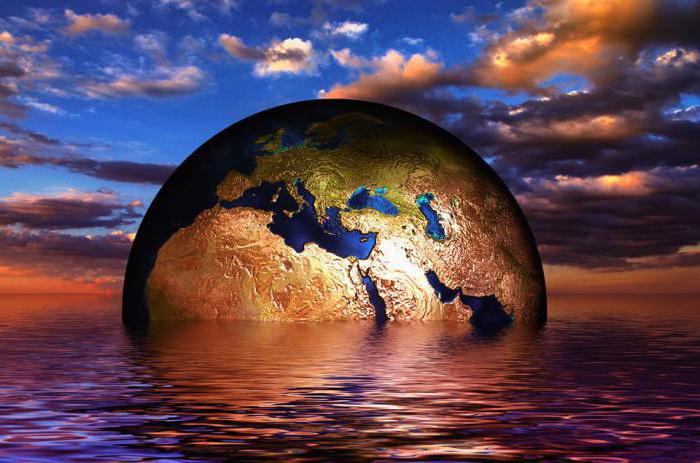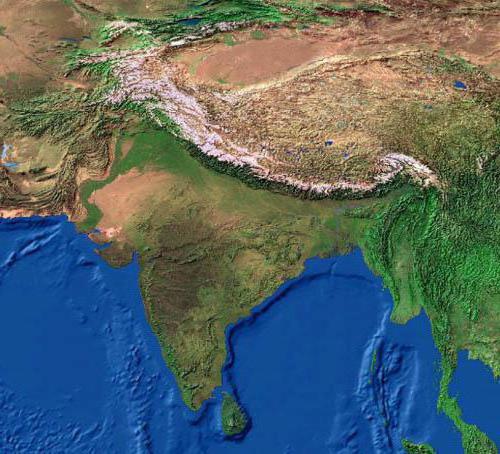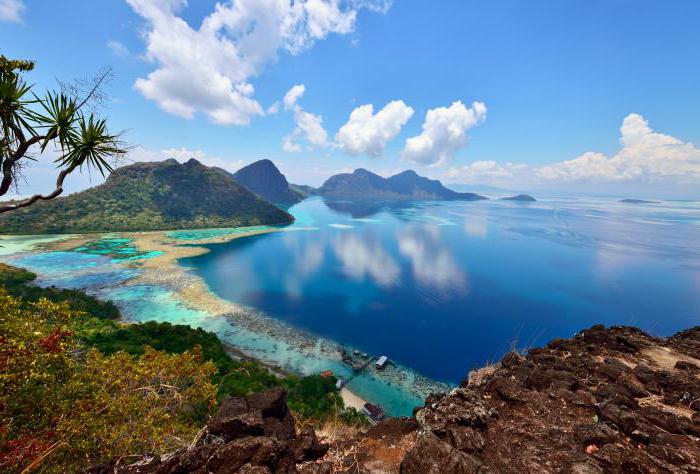Characteristics of climatic zones (table below) is the topic of this article. We will talk about what types of climate exist on our planet, and also consider each of them in detail. To do this, recall that the climate is the weather regime established over the years, which depends on a specific territory, its geographical position.
Equatorial belt
This climatic zone is characterized by low pressure, as well as a year-round presence of air masses. There are no separate climatic regions within the belt. As for the temperature regime, it is hot here. During the year there is a lot of precipitation, moisture is abundant. The weather here changes very dramatically during the day. The first half is sultry, and the second begins with heavy rains.
The names of the climatic zones are associated with their characteristics. The equatorial belt is located near the equator, therefore it has such a name.
The subequatorial belt is characterized by a seasonal change in air masses. Equatorial air masses prevail in summer, and more tropical in winter. The weather conditions in summer fully correspond to the equatorial type of climate, while the weather in winter resembles the conditions of the tropical zone. Winters are dry and slightly colder than summer.
Tropical belt
As we already know, the names of climatic zones are associated with their location. This type of climate is characterized by tropical air masses all year round. The air is continental. The real weather of the tropical zone is high pressure and temperature, a large temperature difference not only during the year, but also during the day. Water in such a climate is sorely lacking. It is very hot and dry here, and dry winds are frequent. There is almost no rain. The weather is usually dry and sunny.
However, the tropical belt is deceiving. The eastern shores of the continents, which are washed by warm currents, are also located in this belt, but they have a different climate. The air is tropical sea, heavy rainfall, monsoons. The climatic conditions are similar to the equatorial climate.
The subtropical zones are characterized by a change in air masses. Tropical climate prevails in summer, temperate in winter. Pressure surges in summer and winter are quite high. The pressure is low in winter and high in summer. Despite the strong difference in temperature and precipitation throughout the year, the thermometer is above zero all year round. Sometimes the temperature can even drop to negative values. During such periods, snow falls. On flat areas, it melts quickly, but in the mountains it can lie for several months. As for the winds, the trade winds rule in the winter and the trade winds in the summer.

Temperate zone
The temperature of the climatic zones largely depends on the air masses that prevail over the territory. The temperate zone, as the name implies, has a temperate climate. But not always. Sometimes tropical or arctic air masses invade. The temperate climate is characterized by a large temperature difference. Summers are hot and winters are frosty and long. Relatively low pressure, cyclonicity, instability of weather conditions in winter. Throughout the year, westerly winds blow, sometimes there are trade winds in summer, and northeast winds in winter. Massive snow cover every winter.
Arctic and Antarctic belts
In the characteristics of climatic zones in the table, you can see what temperatures prevail in these zones. The features of these belts are in low temperatures all year round, strong winds and cold summers. There is very little precipitation.

Subarctic and subantarctic belts
These belts are distinguished by the temperate climate in summer. Because of this, a large amplitude of temperature fluctuations occurs. There is a lot of permafrost in these belts. In winter, north-easterly and southeasterly winds prevail, and in summer, westerly ones. The belts have 2 climatic regions, about them below.
Territories of climatic zones
Each belt is characteristic of a certain territory. Natural and climatic zones have been formed on the planet for a long time, so we can confidently designate certain areas in which the climate of the zone is pronounced.

The equatorial climate is typical for Oceania, the countries of South America and Africa. The subequatorial climate is typical for Northern Australia and Southeast Asia. Central Australia and North Africa are tropical. Subtropics are characteristic of the interior regions of the continents. A temperate climate prevails in the western part and eastern outskirts of Eurasia. the belt predominates in North America and northern Eurasia. The Arctic and Antarctic belts are characteristic of Australia and the Arctic Ocean.

Climatic zone table
The table shows the characteristics of the zones.
Belt | Average temperature in January | Average temperature in July | Atmosphere |
Equatorial | Wet warm air masses |
||
Subequatorial | Monsoons prevail |
||
Tropical | |||
Subtropical | Cyclonicity, high atmospheric pressure |
||
Moderate | Westerly winds and monsoons |
||
Subarctic | |||
Arctic (antarctic) | Anticyclones |
Climatic zones of belts
The subtropical zones have three climatic regions:
- Mediterranean climate. It predominates in the northern hemisphere, on the southern and western coasts of the continents. In summer, there is a continental climate, and in winter, continental and sea air masses. Summers are dry and warm, while winters are relatively cool and humid. Insufficient moisture.
- Monsoon climate. Distributed on the eastern shores of the continents. Summer monsoons cause intense heat and a lot of rainfall, while winter monsoons cause coolness and dryness. Moisture in this area is moderate. Precipitation is typical for the winter season.
- Marine climate. Distributed on the continents of the southern hemisphere. Sea air masses are characteristic. Summers and winters are warm. There is enough moisture, it is distributed evenly throughout the year.

The temperate zone consists of 5 climatic regions:
- Moderate It predominates on the western shores of the continents. The weather is influenced by warm currents and westerly winds. Winters are quite mild and summers are warm. There will be a lot of precipitation during the year. Winter is characterized by heavy and frequent snowfalls. There is more than enough moisture. The geography of the climatic zone contributes to the instability of the weather.
- Continental temperate climate. It is characterized by warm summers and cold winters. Arctic air masses sometimes provoke a sharp cooling, and tropical air masses - warming. There is little precipitation, they are uniform (cyclonic and frontal).
- Continental climate. Only applies to the northern hemisphere. Moderate air masses prevail here throughout the year. Sometimes arctic air masses appear (in this area, their invasion is possible in summer). In the warm season, there is more precipitation, but in general they are insignificant. A small amount of snow and a predominance of low temperatures contribute to the existence of permafrost.
- Sharply continental climate. Typical for the interior regions of North America and Eurasia. The territory is practically isolated from the influence of the seas and oceans and is located in the center of high pressure. Sometimes summer is hot, winter is always frosty. There is a lot of permafrost. The type of weather is anticyclonic. Little precipitation, little moisture.
- Monsoon climate. Distributed on the eastern side of the continents. It is characterized by seasonality of air masses. Summers are humid and warm, while winters are dry and cool. Summer precipitation is more abundant, excessive moisture.

The subarctic and subantarctic belts have two areas:
- continental climate (severe but short winter, little rainfall, swampy territory);
- oceanic climate (fogs, a lot of precipitation, mild winters and cool summers).
The characteristics of climatic zones in the table do not include two areas of the Arctic and Antarctic belts:
- continental (little rainfall, all year temperatures are below zero);
- oceanic climate (cyclones, little precipitation, freezing temperatures).
The temperature in the oceanic climate can rise up to +5 during the polar day.
Summing up, let's say that the characteristics of climatic zones (in the table) are necessary for every educated person.




